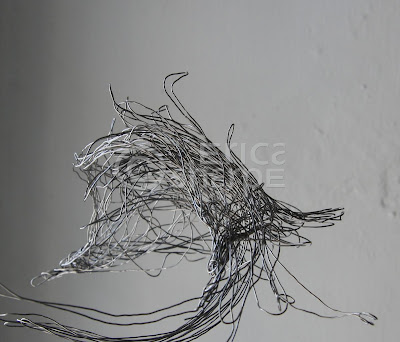Last thoughts
Packing up is a hard thing to do when I have worked so intensively in this place - albeit for such a short time.
 |
| Notes from a visit to the excellent Penlee House Gallery and Museum, Penzance to see the beautiful Penwith Lunula, other treasures and fantastic collection of paintings. http://www.penleehouse.org.uk/ |
I do feel as though I have deepened my understanding of this area, and tin, and have produced preparatory work which will lead to further pieces which reflect how it feels to be in this amazing place. I am keen to use the native tin with Fairtrade and Fairmined gold - as I have recently been granted a licence-holder. The relationship of miner and metal is obviously one of importance generally, to this landscape and to me too.
 |
| Seals off the Cape. Watercolour |
Below, my final thoughts left in the Visitor's book and questionnaire for the trustees of Brisons Veor.
 |
| Visitor's Book |
Activity Report / Questionaire
Please summarise how you think your project went. We are particularly interested in any lessons learned and key achievements.
The project went well - although I quickly realised that two weeks was only going to be the starting point! I was able to develop my ideas in sculpting and drawing with wire - eventually leading to the same in Cornish Tin (see pictures). I also forged connections in this mining area and was able to visit underground and behind the scenes to paint and sketch - further developing methods of providing a visual background to my jewellery pieces. I have a deeper understanding of how rock shapes man and man shapes rock in this unique area - a theme which will run through future creations. Another theme I have been exploring is that of the stark contrasts evident on many levels in this area - textures of sea and landscape, light and dark, activity and stillness, noise and quiet, rich and poor, red and blue/green, hope and disappointment, cliff and valley, etc.
Please give details of the expected outcomes of your activity, in terms of exhibitions, performance, commissions, or sales.
I will be exhibiting and demonstrating at Art in Action, Oxfordshire this summer. Also exhibiting throughout London Jewellery Week, in the Essence (world’s first ethical jewellery exhibition) section of Treasure at Somerset House, Embankment, London.
The British Jeweller’s Association have commissioned me to make 6 pieces for their collection from Cornish tin and silver - I have been working on part of these during my stay too.
How many people do you estimate will benefit from the activity as a result of your residency? Do you focus on any particular ages or special groups in your creative work?
This is difficult to answer! I hope my work might in some way further raise interest in this area’s mining heritage and mineral wealth, and the impact of this on landscape, community and technology. I also hope my work reflects to others (of all ages) my own feelings of the beauty and drama of this environment which is so rich and diverse - to do this by using its native metals is particularly important to me.
In my finished jewellery pieces, I aim to give the the wearer a sense of connection with the above in a form that is tangible, enduring, aesthetically pleasing and treasured.






































